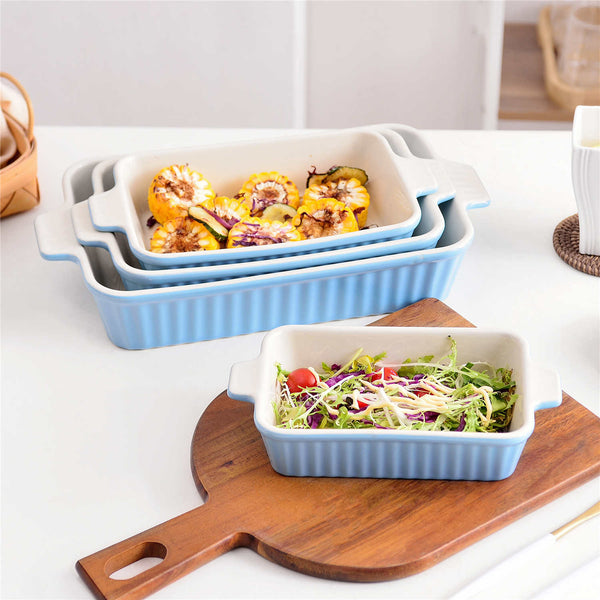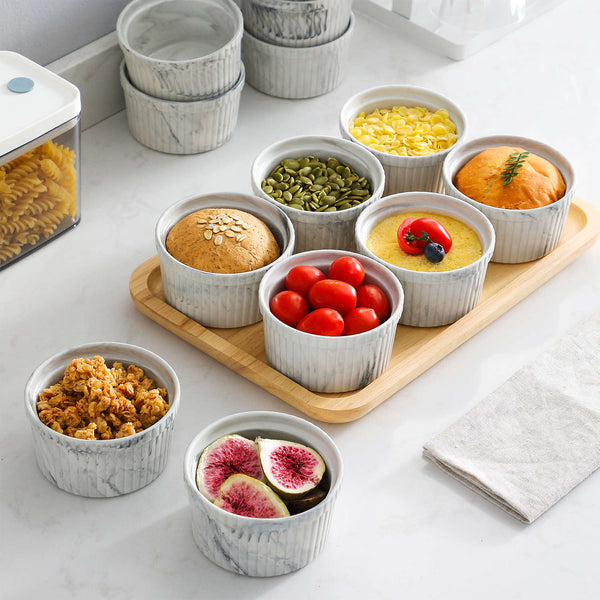Baking Basics: 5 Rules to Follow for Instant Success
Navigation
- Choose the right bakeware
- Preheat the oven properly
- Measure ingredients precisely
- Follow the recipe properly
- Observe and adapt systematically
Digging into the basic rules of baking can help you understand why certain ingredients and techniques are used. Knowing the basics can also allow you to make adjustments necessary to deal with uncertain situations, as you must be prepared when things go wrong.
Baking can be a rewarding hobby, and knowing the basics can help you enjoy the entire process even more. There is a sense of accomplishment that comes from creating deliciously baked products right from scratch.
Knowing the baking basics also ensures that your baked goods turn out consistently well. It helps you avoid and deal with common mistakes and achieve your desired texture, appearance, and flavor. Once you develop a solid grip on the basics of baking, you can start to experiment and get creative with your baking practices. You will also gain the confidence to try out new recipes, flavors, and baking techniques.
In short, knowing the basics of baking sets you up for success and allows you to enjoy the process of baking to its fullest.
1. Choose the right bakeware
Choosing the right bakeware is essential for baking success. There are different types of bakeware that can clearly affect your baked goods. Metal pans are excellent conductors of heat. They heat up quite quickly and distribute heat evenly. However, darker metal pans can cause browning to occur more rapidly, so you need to reduce the baking time accordingly.
Glass bakeware heats up slowly and retains heat well. But, glass can cause the edges of baked products to over-brown. Porcelain bakeware, on the other hand, is also a good conductor of heat and ensures that the baked product is cooked evenly. Porcelain is non-reactive, so it doesn’t interact with acidic ingredients. The non-porous nature of porcelain makes it easier to clean by hand or in a dishwasher.
Porcelain bakeware is suitable for a wide range of dishes, from savory products to mouth-watering desserts. Porcelain bakeware has a very beautiful and elegant appearance. It is a stylish choice to serve dishes directly from the oven to the table.
When selecting the bakeware, it is essential to choose high-quality utensils. High-quality bakeware ensures even baking and prevents incidents of burning or sticking. Moreover, using the right size and shape of the bakeware mentioned in the particular recipe is essential to attain the desired baking outcome.
2. Preheat the oven properly
Preheating the oven is also crucial to attain baking success. Preheating ensures that the oven reaches the desired temperature before you put in your baked goods. It ensures that your food is cooked properly and evenly.
For recipes that include leavening agents such as baking powder, preheating the oven helps to create the right environment required for these agents to work. It ensures that the baked goods rise properly and have the appropriate texture.
Preheating also helps to create a good, golden brown crust on the baked goods by swiftly setting the external layer of the dough or batter. Most importantly, preheating the oven can help you follow the baking times accurately and the temperature levels required for a particular recipe to work out properly. If you place your food in a cold oven, it will take a longer time to bake, which can further lead to overcooked or undercooked consequences.
To preheat your oven, set it to the temperature specified in your recipe and allow it to heat up properly before placing your food inside. The majority of ovens notify us when they reach the desired temperature level. The preheating time can vary according to the model of your oven and the desired temperature. Normally, it takes around 10-15 minutes for the ovens to preheat properly.
3. Measure ingredients precisely
Measuring ingredients in the baking process is essential as it directly affects the texture and flavor of the baked goods. Weighing ingredients provides a more consistent result because the weight remains the same regardless of how it is packed or the way it is chopped. It is particularly important for ingredients like flour, where the density can be varied significantly based on how it is measured.
Measuring by weight is more accurate than using volume measurements because it can be affected by a number of factors, such as the way an ingredient is scooped, etc. Remember, the precision in the measurement of ingredients plays a crucial role in achieving the desired texture in the baked goods.
Use the measuring cups or spoons that are the correct size for the ingredients you are measuring. For dry ingredients such as flour or sugar, spoon the ingredient in the measuring cup until it is slightly overflowing and then level it off with a straight edge. Don’t pack the ingredients downwards.
To measure the liquid, use liquid measuring cups placed on a flat surface and read the measurement at eye level. Check the accuracy of your measuring cups and spoons periodically. Be consistent in your measuring technique to ensure consistent results in baking.
4. Follow the recipe properly
Baking is a science, and recipes are formulated to ensure that the chemical reactions can occur properly. Deviating from the recipe can lead to undesired consequences. Recipes are carefully designed to reach a particular texture and flavor. Altering ingredients or their proportions can also alter the final result.
Following a recipe ensures that you will achieve consistent results every time you make a particular dish. This is quite important, especially if you are baking for a particular event or in the business of selling baking goods.
Following recipes can also be an effective way to learn different baking techniques and ingredients. Once you have mastered a particular recipe fully, you can start to experiment with variations.
To adhere to the recipe, it is essential to read it carefully before you start and gather all the equipment and ingredients you will need. Follow the instructions properly, such as mixing time, reaching desired temperature levels, and the order in which the ingredients are to be used. If you are required to make a substitution, carefully choose the option that is close to the original in terms of flavor and texture.
5. Observe and adapt systematically
Observing changes during the baking process and adapting the techniques according to requirements is a crucial and much-needed skill in successful baking. Pay attention to how your baked products look as they bake. Closely look for changes in color, texture, and volume. For example, your cake should spring back when it is pressed slightly, and the cookies must be golden brown around the edges.
Keep an eye on your oven temperature. Sudden fluctuations can affect the baking process. You can use an oven thermometer to ensure accuracy. While the recipes provide guidelines regarding baking times, they can vary depending on your oven and the amount of dish you are making. Use the suggested time as a starting point and adjust on the basis of visual cues you will get during the baking process.
If you are required to make substitutions, be prepared to make adjustments in other aspects of the recipe as well. For instance, if you are using a different type of flour, you may be required to add more or less liquid to achieve the desired consistency.
Following these basic baking rules can help you enjoy the process to its fullest with your desired baked product. Always choose the right bakeware. Porcelain bakeware is a perfect choice to have a direct serving from oven to table. We strongly recommend that beginners invest in high-quality bakeware to kick-start their baking journey. Keep practicing at a gradual pace to accumulate experience and expertise. Preheat the oven properly so that the baked good is cooked evenly. Measure the ingredients precisely to attain the desired and consistent baking outcomes.
Follow the recipe to achieve the required texture, flavor, and volume. You must be skilled enough to adapt your techniques when required. Pay attention to your product while baking. You must be watchful and alert until you achieve the needed baked product with perfect texture and flavor.








Leave a comment